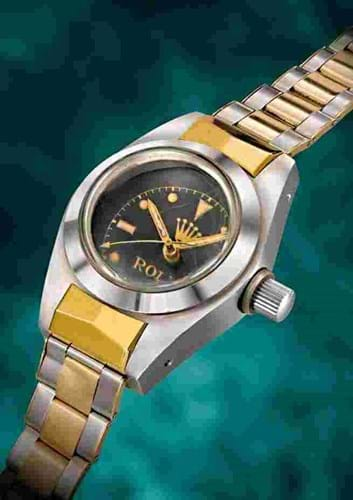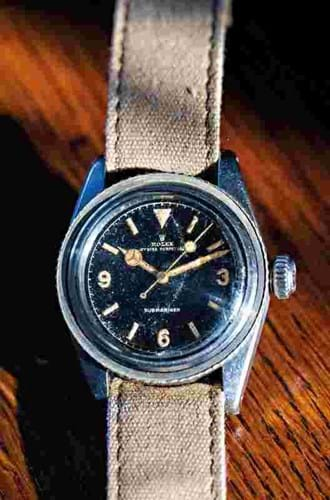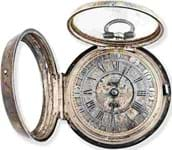
The first of perhaps seven prototypes (Deep Sea Special No 1) was attached to the hull of Auguste Piccard’s bathyscaphe Trieste for the inaugural deep-sea trial to a record depth of 3150m in the Mediterranean on September 30, 1953.
Another (No 3 now in the Smithsonian, Washington, DC) would reach 10,908m in the Mariana Trench in a vessel carrying Piccard's son Jacques on January 23, 1960. The following day Piccard sent a telegram to Rolex in Geneva saying: "Am happy to confirm that even at 11,000 meters your watch is as precise as on the surface.”
Rémi Guillemin, head of watches at Christie’s Geneva, described the Deep Sea Special series as “the ultimate incarnation of the Oyster case design which from then on defined the Rolex watches and the brand”.
And Christie’s (25/20/14.5% buyer's premium) was hoping it had the ultimate edition of Rolex Deep Sea Special, in its Geneva autumn watch sale. In a pre-sale promotional article, this was described as the watch that Piccard had taken with him as he explored the depths of the Tyrrhenian Sea in 1953.
The saleroom stated that “it was on this descent that they travelled with an ostensibly unlikely companion: the Rolex Deep Sea Special No 1”. It was offered in Geneva on November 8 and expectations were set at over SFr2m-4m, with the auction house predicting a multi-estimate sum for such a trophy piece.
But was this actually the record- setting watch? Unlike its case, the story that accompanies this watch is not completely watertight.
When last sold at Christie’s in 2005 (for SFr322,400) it was described as having “participated at one of Piccard's diving trials, according to its owner” and the finer points of cataloguing this time noted it was “understood to be the watch fixed to the outside of Prof Piccard’s bathyscaphe in September to October 1953” and “perhaps the same watch which reached a depth of 3700m during a further dive of the Trieste in 1956”.
Some highly technical articles that appeared online were unconvinced that the object and its condition tally perfectly with what is known about Deep Sea Special No 1. It was perhaps for this reason that the watch found only one bidder some distance below estimate at SFr1.5m (£1.2m).
Later in the 1960s, a limited number of Deep Sea Specials were produced by Rolex for distribution to science, technology and watch museums and high-profile partners. These are engraved to the back with the 10,908m depth of the Mariana Trench and a commemorative date. Serendipity had it that one of these, No 35 in the series, was offered by Phillips Geneva (26/21% buyer’s premium) earlier in the week (November 5-7). Again, the pre-sale estimate of SFr1.2m-2.4m had proved a little ambitious and it sold for SFr850,000 (£688,500).
An early Submariner
The Deep Sea Special watches are an important part of the story of the classic Rolex diving watch, the Submariner.
A very early version – the 1954 Rolex Submariner 6200 – appeared for sale in the autumn on the Watch Collecting (6% buyer's premium) auction site. Catalogued as ‘The Holy Grail of Rolex Submariners’, the piece is one of an estimated 300 produced in 1954 with only a handful thought to survive the intervening 67 years.
The first Rolex to be depth rated to 200m, it features a 3-6-9 dial layout, ‘Mercedes’ hands and an 8mm ’big’ crown. Discovered amongst the inherited possessions of an oil-industry geologist, this example lacks its original bezel insert, a common problem for this reference and the cotton canvas strap is a modern replacement. However, the dial, hands and crystal are original components and the case, while marked, had received very little polishing.
Offered across a week when it received 43 bids, it closed on September 28 at £205,000.















